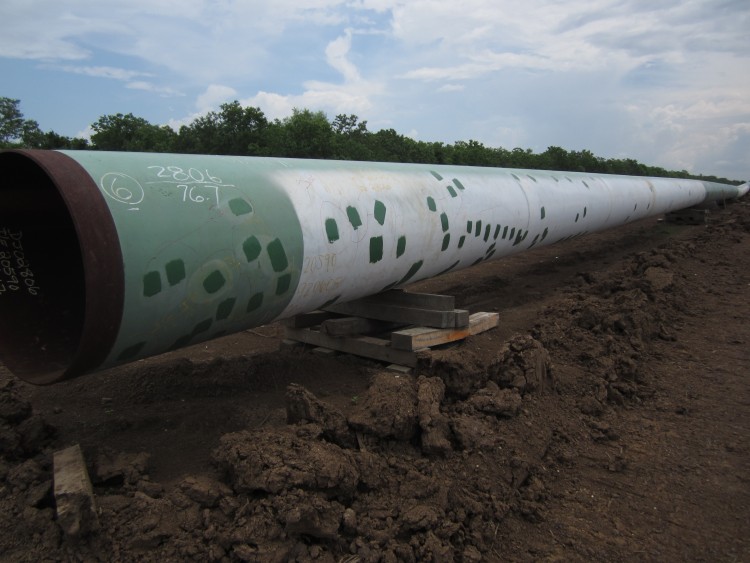Responding to complaints from Nebraska citizens and others, the U.S. pipeline safety regulator (PHMSA: Pipeline and Hazardous Materials Safety Administration) sent a letter to TransCanada CEO Russ Girling, dated May 28, 2014, detailing the statutorily defined roles that local and state governments play in pipeline safety, siting, and regulation.
The letter clarifies for TransCanada what citizens knew all along — that local governments play a crucial role in regulating pipelines to protect their communities.
But TransCanada has been telling a much different story to our local county boards and zoning commissions.
Their lawyers have been trying to intimidate our local elected officials — using threats of legal action against small towns to try to scare them away from enacting regulations on pipelines like Keystone XL. Attorneys for TransCanada regularly show up at local county board and zoning meetings in Nebraska, with threats that any attempts to regulate their pipeline will end up getting the county sued in court.
Here’s an example: A letter TransCanada’s lawyers sent to the Antelope County, Nebraska Board on July 26, 2013:
TransCanada Memo to Counties on Pipeline Regulations
PHMSA came to Nebraska to meet with local officials and citizens in York County in late February 2014.
At the meeting, citizens gave PHMSA the letter above from TransCanada, and stated how frustrated they were that TransCanada sends these types of memos, and gaggles of lawyers to citizens’ meetings as they are trying to put in place legal and common-sense regulations to protect land and water, along with the health and economic activity of their towns.
PHMSA responded to citizens’ complaints this week by sending the letter below, addressed to TransCanada CEO Russ Girling, that confirms the role of local governments in pipeline safety.
Highlights of PHMSA Letter to TransCanada CEO Russ Girling:
- “all three levels of government — federal, state and local — play an important role in ensuring that the Nation’s pipeline system operates safely”
- “No federal agency has the power to determine the siting of oil pipelines. Therefore, the responsibility for siting new interstate oil pipelines such as Keystone XL rests largely with the individual states which the lines will operate and is governed by state law.”
- “Federal law recognizes the right of states to adopt Federal safety standards and to inspect, regulate and take enforcement action against the operators of pipelines within their borders. This includes the right to impose more stringent safety standards than the Federal minimums.”
- “Local governments have traditionally exercised broad powers to regulate land use and property development, including in the vicinity of pipelines. Nothing in federal law impinges on these traditional prerogatives of local government, so long as officials do not attempt to regulate the field of pipeline safety preempted by Federal law.”
Examples PHMSA cites of local government regulation of pipelines:
- Controlling dangerous excavation activity near transmission pipelines;
- Limiting certain land use activities along pipeline rights-of-way;
- Restricting land use and development along transmission pipeline rights-of-way through zoning, setbacks and similar measures;
- Requiring the consideration of transmission pipeline facilities in proposed local development plans;
- Designing emergency response plans and training for regulators and operators;
- Requiring specific building code design or construction standards near pipelines;
- Improving emergency response and evacuation plans in the event of a transmission pipeline incident; and
- Participating in Federal environmental studies conducted under the National Environmental Policy Act (NEPA) and similar State laws for new pipeline construction projects.
PHMSA Letter to TransCanada on Role of Local Governments in Pipeline Safety
PHMSA Places New Safety Restrictions on TransCanada After Shoddy Work on KXL South Exposed


The Associated Press cited PHMSA’s letter that revealed:
“From the start of welding, TransCanada experienced a high weld rejection rate… Over 72 percent of welds required repairs during one week. In another week, TransCanada stopped welding work after 205 of 425 welds required repair.”
What’s more, “In high risk projects such as nuclear submarines or nuclear power plants, even one-tenth of a percent rate of bad welds would be a cause for concern,” according to certified welder, forensic engineer and professor emeritus of civil and environmental engineering at the University of California, Berkeley, Robert Bea.
“The level of defects is indeed cause for alarm and indicative of something that is going on in the Keystone organization that isn’t satisfactory,” Bea told AP.
Click here to view more photo examples of TransCanada’s shoddy work on KXL South.





